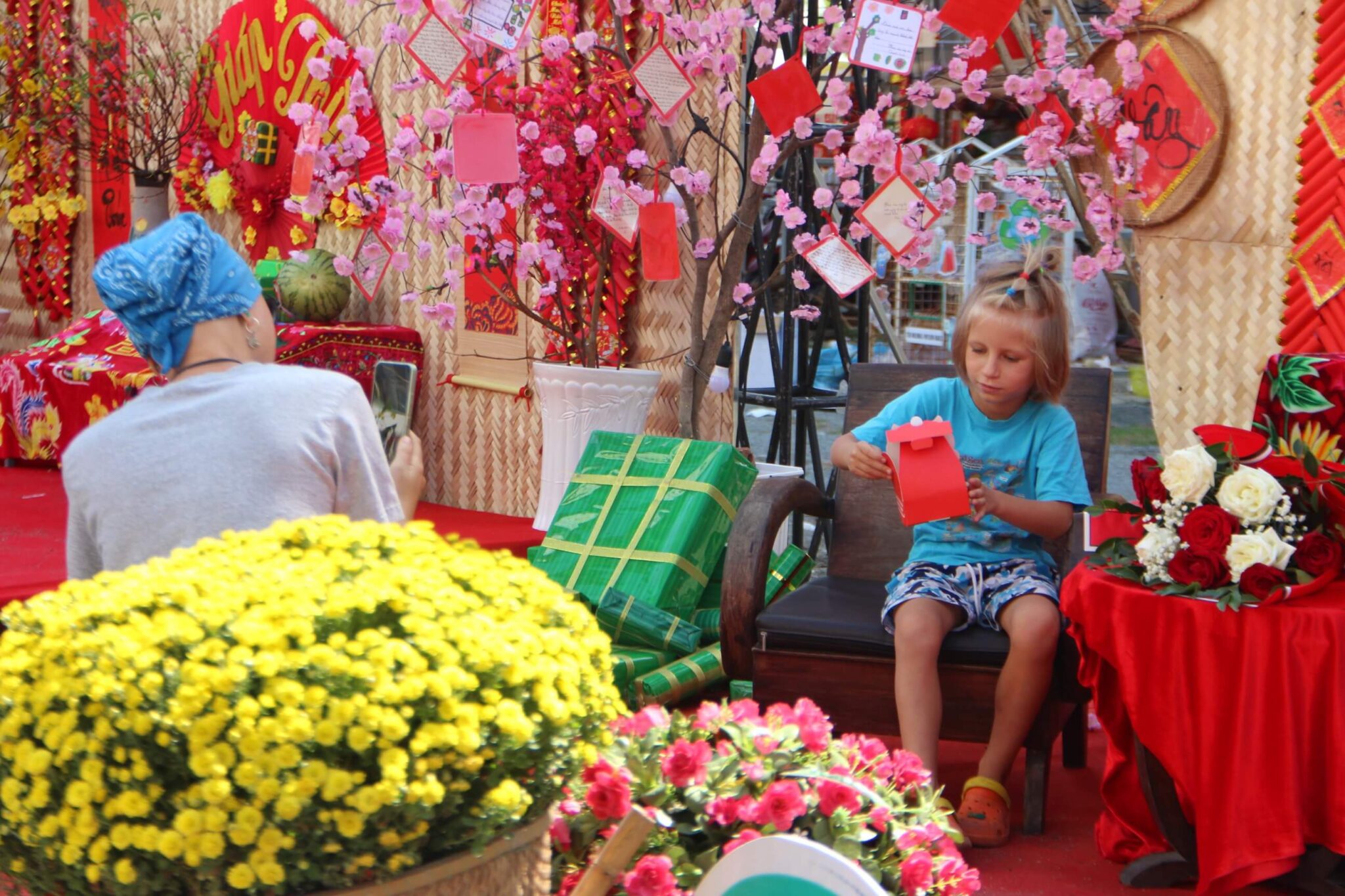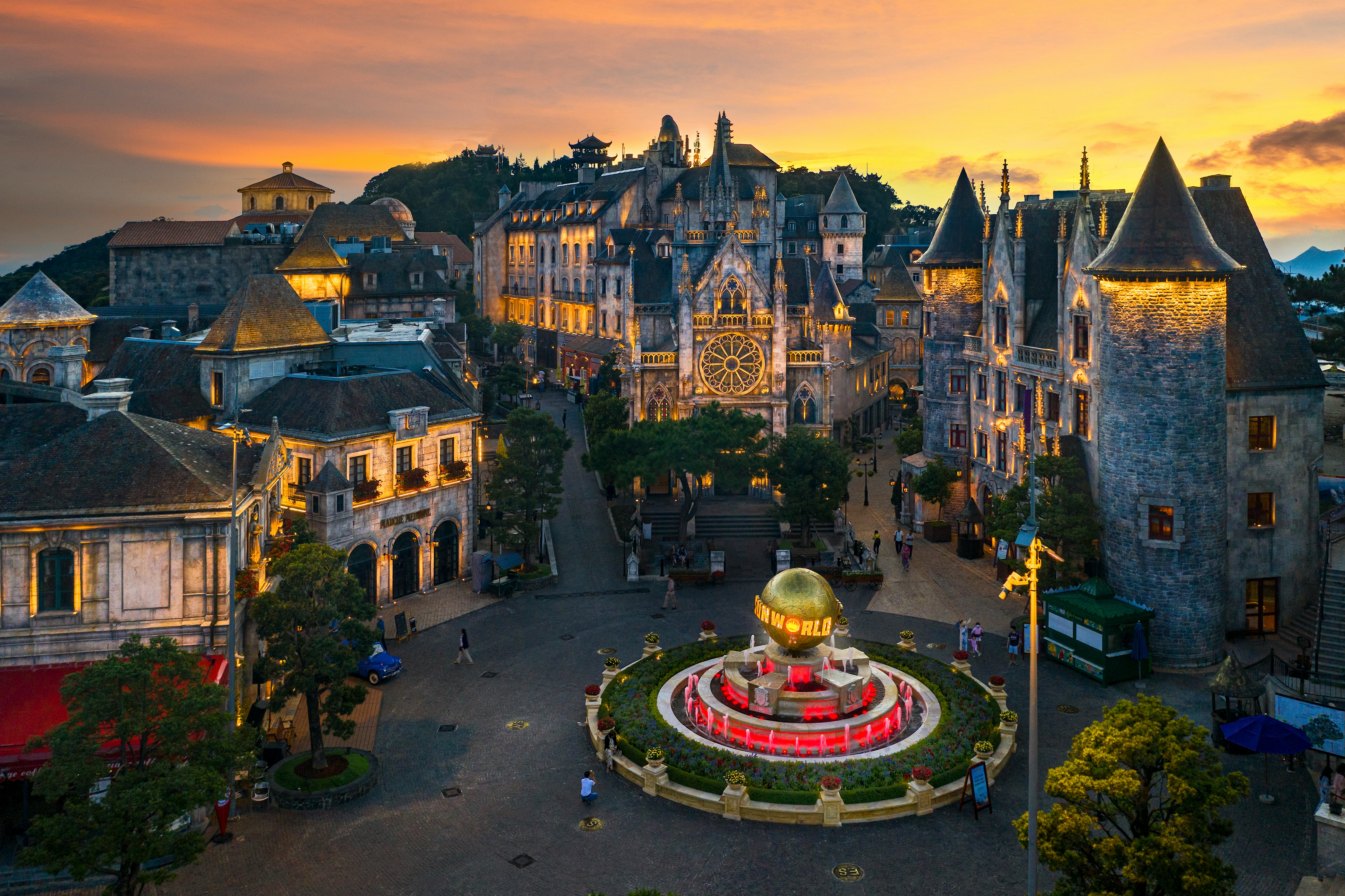
Best Time To Visit Da Nang: A Complete Guide For Travelers
Da Nang weather overview
Da Nang experiences a tropical monsoon climate with two distinct seasons: the dry season from January to August and the rainy season from September to December. Thanks to its coastal location, the city enjoys warm temperatures year-round, but weather conditions such as rainfall, humidity, and sea activity can vary significantly between the two seasons.

Dry season (January to August)
- Weather: Warm to hot temperatures, low rainfall, and plenty of sunshine
- Humidity: Moderate (60% - 80%)
- Winds: Light coastal breezes, especially refreshing along the beaches
- Sea conditions: Calm, clear, and ideal for swimming and water sports
From January to March, travelers can enjoy cooler weather that's perfect for hiking in the Marble Mountains or visiting cultural landmarks. From April onward, the city enters peak summer, bringing intense sunshine, clear skies, and calm seas, making it the best time for swimming, sunbathing, and watersports along My Khe Beach and Non Nuoc Beach.
Rainy season (September to December)
- Weather: Heavy rain, increased humidity, and occasional tropical storms
- Humidity: High (80%–90%)
- Winds: Stronger winds and rougher sea conditions
- Sea conditions: Caution advised; some water activities may be limited
This is Da Nang’s off-peak travel period. While rain showers are frequent, they typically come in short, intense bursts, followed by clearer skies. Travelers during this time will enjoy lush green scenery, fewer crowds, and lower hotel prices. However, it’s important to keep an eye on weather forecasts for potential typhoons, especially in October and November.
Da Nang season by month
January to March – Cool, dry, and comfortable
From January to March, Da Nang enjoys mild temperatures ranging from 18°C to 28°C. Rainfall is low, and humidity is manageable, making this one of the most comfortable periods to explore the city. It’s a great time for outdoor sightseeing, hiking in the Marble Mountains, or strolling along the Han River.
The Vietnamese Lunar New Year, or Tet Festival, usually falls in late January or February, offering a unique cultural experience - but also leading to temporary closures of some businesses. Overall, this season is ideal for travelers who prefer cooler weather and fewer tourists.
For a month-by-month breakdown, check our detailed guides on Da Nang weather in January, February, and March.

April to August – Hot, sunny, and ideal for the beach
April to August marks the peak of Da Nang’s dry season. Average daytime temperatures rise from 24°C in April to around 35°C in June and July. Rainfall is minimal, especially from April to June, and the beaches are at their best with calm seas and sunny skies.
This is the perfect time for beach lovers, families, and festivalgoers. Attractions like Ba Na Hills and Dragon Bridge are fully operational and bustling with activity. However, July and August can get crowded, so booking accommodations in advance is recommended.

September to November – Rainy season with tropical storms
As the rainy season begins in September, Da Nang experiences heavier showers and increased humidity. Rainfall peaks in October, with monthly averages surpassing 500mm. Temperatures remain warm, typically between 24°C and 30°C, but sudden downpours and the possibility of tropical storms may affect travel plans.
On the plus side, this is a quiet time with fewer tourists, lower prices, and beautifully green landscapes. It's a good choice for budget travelers who are flexible with their itinerary and don’t mind occasional rain.
Curious about travel conditions during the rainy season? Don’t miss our detailed breakdowns of Da Nang weather in September and October.
December – A cool and festive transition
In December, Da Nang begins to dry out after the rainy season. Rainfall decreases, and temperatures range from 20°C to 26°C, creating a cool and refreshing atmosphere. The city embraces the festive season with decorations, light shows, and year-end events.
Although not peak beach season, December is still a pleasant time to visit for sightseeing, cultural tours, and enjoying Da Nang’s more relaxed pace before the Tet holidays return.
When is the best time to visit Da Nang?
The best time to visit Da Nang largely depends on what type of travel experience you're looking for - whether it’s soaking up the sun on the beach, exploring cultural landmarks, or enjoying local festivals. However, for most travelers, the ideal time to visit Da Nang is from April to July, when the weather is at its most favorable and the city is in full swing.
If you're planning a beach holiday, an outdoor adventure, or a family vacation, April through July is hands-down the best time to travel to Da Nang. This is when the city experiences its driest and sunniest weather of the year. Average daytime temperatures range from 26°C to 35°C, with low humidity and nearly zero chance of rain, especially in April, May, and early June. The skies are bright blue, the waters are calm, and the beaches like My Khe Beach, Non Nuoc Beach, and Bac My An Beach are in peak condition. Whether you want to swim, surf, kayak, or relax under the sun, this is the time to do it. The ocean is warm and clear, making it ideal for snorkeling and diving as well.
Tourist attractions are fully operational and buzzing with life. You can take a cable car to Ba Na Hills, visit the iconic Golden Bridge, or watch the Dragon Bridge breathe fire on weekend nights. This period also hosts several cultural and entertainment events, including beach festivals, fireworks shows, and summer night markets.
However, keep in mind that this is also the peak tourist season, especially from late June to early July, when both domestic and international visitors flock to the city. To make the most of your trip, it’s recommended to book flights, hotels, and tours in advance.
Looking for the best places to enjoy the sun and sea? Check out our list of the Top 7 beaches in Da Nang - from lively My Khe to hidden local gems.
Essential travel tips for visiting Da Nang
Whether you’re visiting Da Nang for its beaches, mountains, or cultural sites, a few smart travel tips can help you make the most of your trip. From weather preparedness to local customs, here’s everything you need to know for a smooth, enjoyable experience in this vibrant coastal city.
- Plan your trip around the weather: Visit during the dry season (January–August) for the best sightseeing and beach days. April to July offers the sunniest skies and calm seas, perfect for beach lovers. If visiting from September to November, expect sudden rain and plan with flexibility.
- Getting there and around: Fly into Da Nang International Airport (DAD) is well-connected to Hanoi, Ho Chi Minh City, Bangkok, Seoul, and more. For a scenic option, take the Reunification Express train, which links Da Nang with northern and southern Vietnam. To get around the city, use Grab, metered taxis, or rent a motorbike if you're comfortable driving.
- Book accommodations wisely: The city offers a wide range of options, from luxury beach resorts to budget guesthouses. Book well in advance if traveling during national holidays or the April-July peak season.
- Currency and payments: The local currency is the Vietnamese Dong (VND). Credit cards are widely accepted, but it's a good idea to carry cash for local shops and street food. Use banks or licensed exchange counters to avoid airport currency booths.
- Stay safe while you explore: Da Nang is safe, but watch your belongings in busy areas. In hot months (especially May–July), wear sunscreen, stay hydrated, and use bottled water. Travel insurance is a good idea if you're renting a motorbike or joining tours.
Da Nang is worth visiting year-round, but the best time to visit Da Nang is from April to July, when the weather is sunny, the sea is calm, and attractions are at their best. Plan your trip during these months to enjoy the full beauty and energy of this coastal city.
>>> Drop us your request HERE, or choose what kind of contact options below you prefer:
- Hotline: +84 963 623 907
- Email: info@asiamystictravel.com
- WhatsApp: +84 963 623 907
We're here 24/7 to turn your travel ideas into a seamless adventure.
Quick Contact
What do customers say about us?
Join us to experience a trip that will make you remember forever
